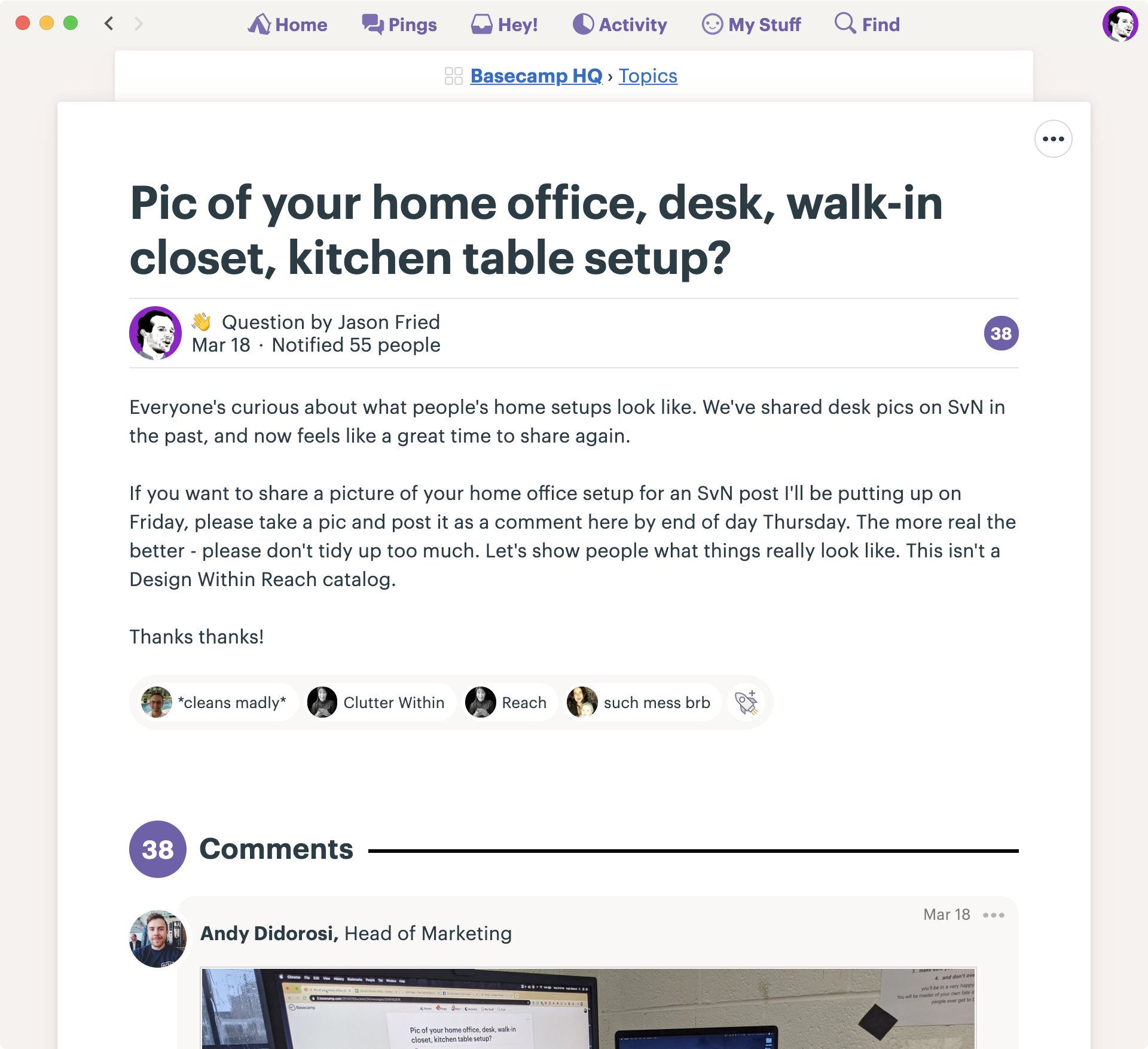We had originally planned to release HEY, our new email service, in April. There was the final cycle to finish the features, there was a company meetup planned for the end of the month to celebrate together, we’d been capacity testing extensively, and the first step of a marketing campaign was already under way.
But then the world caught a virus. And suddenly it got pretty hard to stay excited about a brand new product. Not because that product wasn’t exciting, but because its significance was dwarfed by world events.
A lack of excitement, though, you could push through. The prospect of a stressful launch alongside the reality of a stressful life? No.
That’s not because we weren’t ready to work remotely. That we had to scramble to find new habits or tools to be productive. We’ve worked remotely for the past twenty years. We wrote a book on working remotely. Basecamp is a through and through remote company (and an all-in-one toolkit for remote work!).
But what’s going on right now is about more than just whether work can happen, but to which degree it should. We’re fortunate to work in software where the show doesn’t have to stop, like is the case in many other industries, but the show shouldn’t just carry on like nothing happened either.
About half the people who work at Basecamp have kids. They’re all at home now. Finding a new rhythm with remote learning, more cramped quarters, more tension from cooped-up siblings. You can’t put in 100% at work when life asks for 150%. Some things gotta give, and that something, for us, had to be HEY.
And it’s not like life is daisies even if you don’t have kids. This is a really stressful time, and it’s our obligation at Basecamp to help everyone get through that the best we can. Launching a new product in the midst of that just wasn’t the responsible thing to do, so we won’t.
Remember, almost all deadlines are made up. You can change your mind when the world changes around you.
HEY is going to launch when the world’s got a handle on this virus. When we either find a new normal, living within long-running restrictions, or we find a way to beat this thing. We’re not going to put a date on that, because nobody knows when that might be. And we’re not going to pretend that we do either.
In the meantime, we’ll keep making HEY better. We’re also going to put in time to level up Basecamp in a number of significant ways that have long been requested. The work doesn’t stop, it just bends.
If you wrote us an email to [email protected], you’re on the list, and we’ll let that list know as soon as we open up. If you think you might be interested in a better email experience when that’s something we all have the mental space to think about again, please do send us a story about how you feel about email to [email protected].
Stay home, stay safe!

